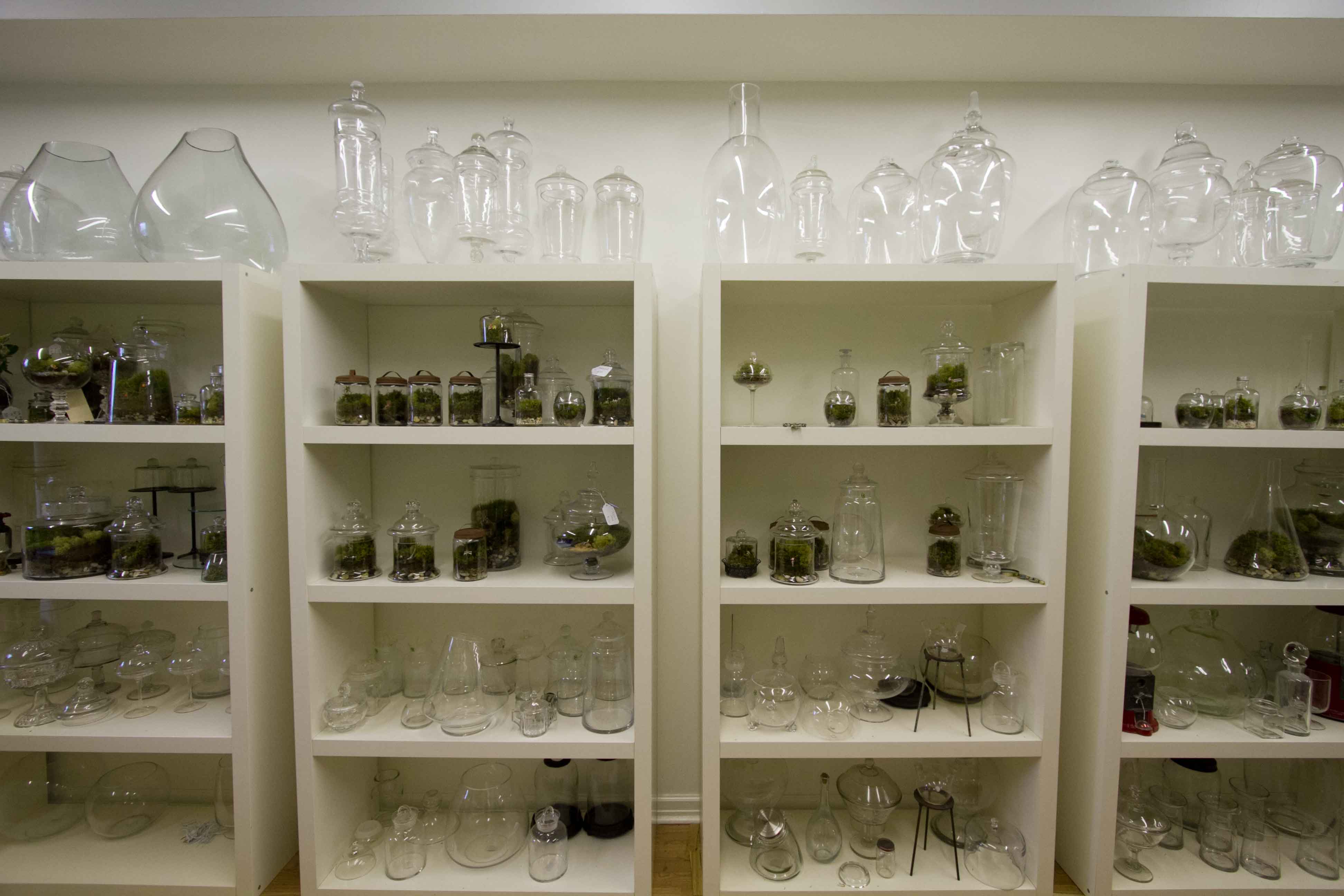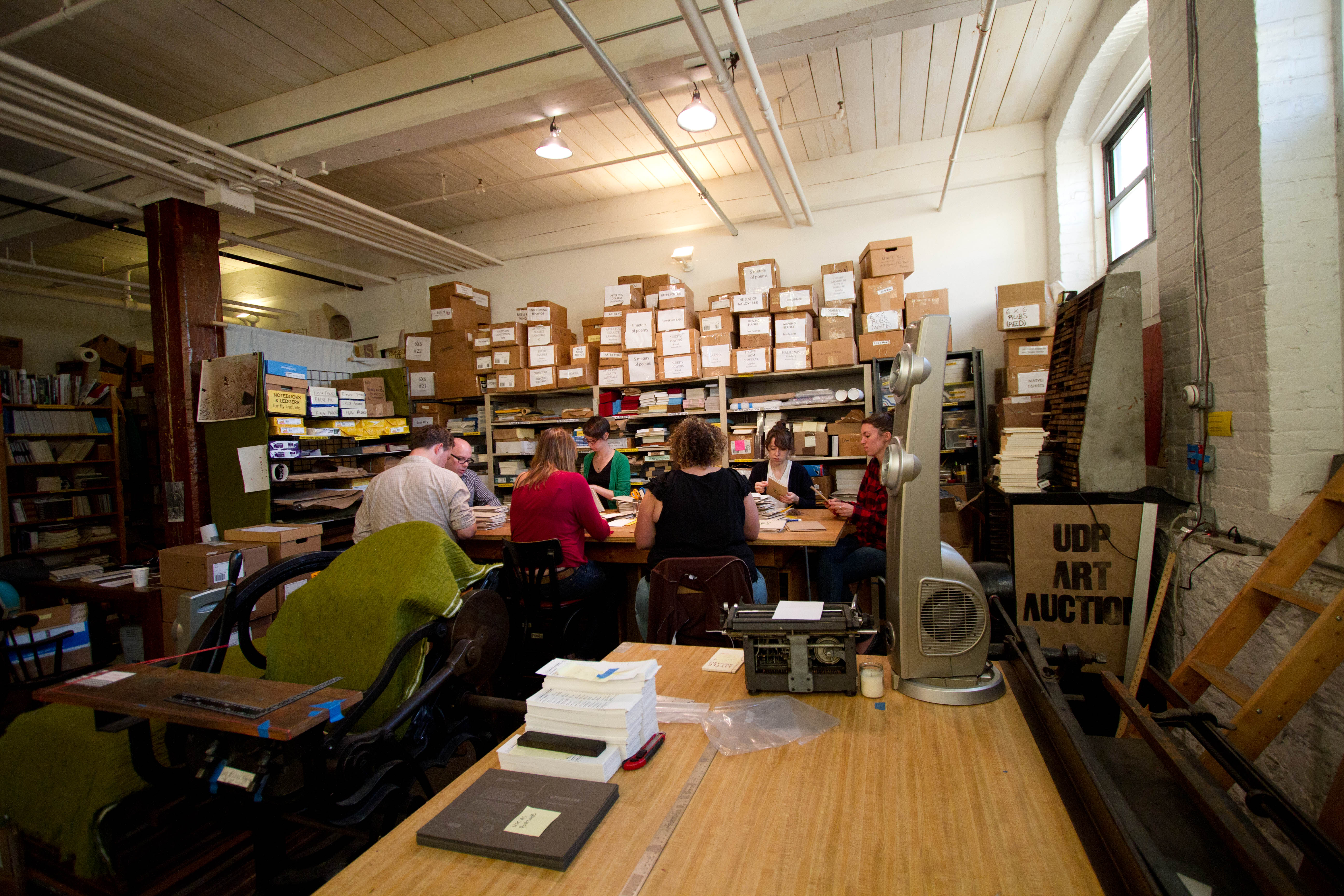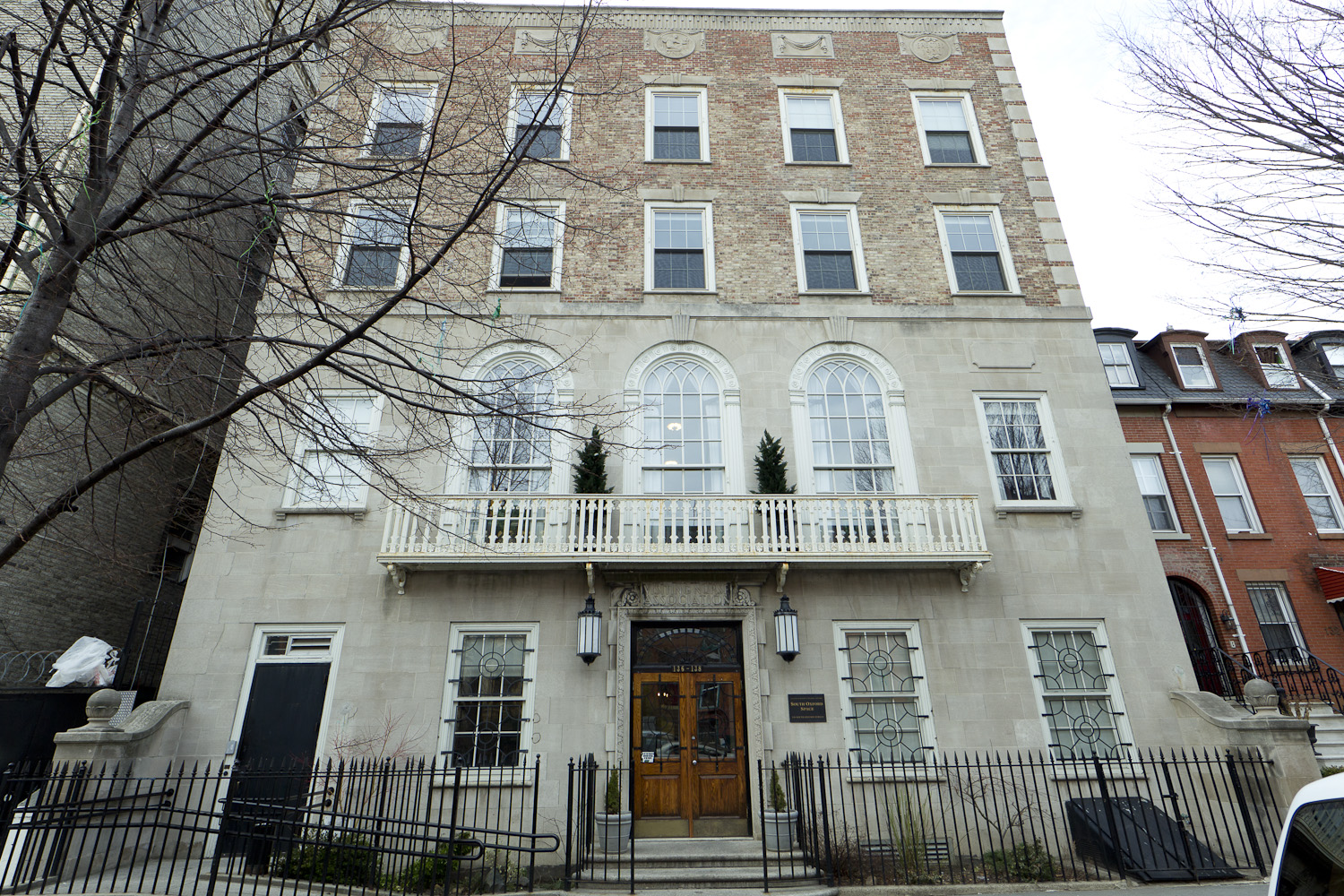space type: aerialist venue | neighborhood: williamsburg, bushwick | active since: 2011 | links: website, facebook, twitter
Update, spring 2015: Last winter, Vice magazine took over two adjoining buildings on the Williamsburg waterfront, evicting several underground spaces in one fell swoop: Death By Audio, Glasslands, and the Muse, which actually got pushed out due to construction before the end of their lease. Undaunted, the Muse family Kickstarted more than $60,000, and in April 2015 they reopened an enormous new space in Bushwick.
***
The Muse is an aerialist performance and workshop space in South Williamsburg dedicated to fostering experimental creativity, and giving artists the space and time to try out new things. It was founded in late 2011 by Angela Buccinni, a dancer, acrobat, and aerialist, and Yuval Oz, a musician and acrobat.

Angela as a reindeer in Hot Frosty (photos by Maximus Comissar unless noted)
The space is a former garage for Domino Sugar, which Angela and Yuval built out from scratch—in only two months they did the living space with six rooms on two floors, an elevated stage, a bathroom, and a kitchen, as well as put in rigging points throughout the main performance area. They’ve gotten an outpouring of help from Williamsburg artists, and have a close partnership with Karen Fuhrman’s aerial dance company Grounded Aerial, of which Angela is also member. In addition to performances, the Muse offers classes and workshops in hand-balancing, acrobatics, silks, harness, trick ropes, kudayo, and lots more.
I was lucky enough to be invited over to the Muse for the dress rehearsal of Grounded Aerial’s first annual holiday show, Hot Frosty. I got to hang out with Karen, Angela, Yuval, and the rest of the incredibly happy and nice cast, plus Angela and Yuval’s collection of wonderful dogs.

Hot Frosty cast shot
brooklyn spaces: Karen, can we start with a quick run-down of Grounded Aerial?
Karen: Grounded does three things. We do corporate events, for companies like IBM, Microsoft, and H&R Block—the bigger the better. That tends to fund the second thing: our theatrical ventures, like Insectinside, which is an evening-length piece, equal parts dance, theatre, and aerial, and Hot Frosty, which is little scenes peppered throughout the evening, singing, dancing, aerial, over here, over there, above your head, on the stage, on the wall—it’s happening all around you as you’re hanging out drinking cocktails with your friends. The third thing we do is classes, which everyone should come out and take. They’re not only for dancers; anyone could put a harness on, even my mom. It’s an amazing workout, and it’s really empowering.

photo from The Muse’s Facebook
brooklyn spaces: What’s the link between Grounded and the Muse?
Karen: We support each other, we love each other. There’s a beautiful aerial community in Williamsburg, and Angela and Yuval having this space will really reinforce that community. It’s going to be an outstanding force.

brooklyn spaces: Angela and Yuval, what was your motivation for starting the space?
Angela: I think one of the main problems with trying to create art in New York City is that it’s so hard to survive financially that people can’t invest time in the creation process, to actually sit in your work, soak in it, develop it. With Grounded we do that a lot, we play with things, we improv, we throw things out, we get new things, we merge ideas. So part of the whole concept behind the Muse is that we want to support that kind of creation process, to ensure that there’s a place for people to do that.
Yuval: We really want to create an atmosphere for taking time for creation, for experimenting, a place when you can do everything and try everything. I think this is part of doing art.
Angela: We want it to be comfortable here, like you’re sitting in a living room, with no sense of judgment. We want that sort of calm energy, where it’s safe to go into the process and get lost in your art and feel okay, and to actually work off of the other things and people in the space.

brooklyn spaces: So tell me a quick history of the space itself.
Angela: That’s a long story. I had an outdoor dance studio in my backyard in Bushwick called Studio 43. We produced a few shows and then, do you remember the tornado we had last year? Well, it ripped up a tree from the lot next door and crushed everything. Around that time I was offered a tour that took me to Israel. One day while I was rehearsing there, this beautiful dog wandered into the theatre, and I jumped off the stage and just started hugging him. And Yuval came in looking for Shesek and found me. I think he had actually told Shesek, “Go fetch that girl.”
Yuval: That’s your version!
Angela: So Yuval and I hung out while I was doing the tour, and then I stayed in Israel. We almost opened the Muse in Tel Aviv; we were really looking, but we ultimately decided to raise some money with a Kickstarter and then come back do it here. A friend told us about this space, we came and we looked at it, and that was it. It’s amazing. There’s nothing in the cards to say we should be able to do this right now, but somehow we’re doing it. We have a long way to go, but it’s in motion. Whenever we don’t have enough money for the next thing, we have a show or a party to raise money. We had a ’70s disco party in November to pay for a hot-water heater.

Join the Circus Day (photo from The Muse’s Facebook)
brooklyn spaces: How many people are involved?
Angela: At least thirty, thirty-five people have popped in once or twenty times or a million times. It’s all artists, it’s like a big community. And it’s normally a social event; we cook together and then we build. Or I melt down and everyone hugs me and then we build. There’s a lot of that too.
Yuval: It’s a great way to discover new friends and good people.
Angela: We’ve had complete strangers come help us. People tease us that we’re basically building an artists’ kibbutz. And we’re always looking to expand it!
Yuval: Also we’re always searching for trades. People can come help us and then get free classes in hand-balancing, harness, silk, bungee, anything.
 brooklyn spaces: Are you involved in the larger aerial and dance community in Brooklyn? Are people coming from House of Yes or Big Sky Works or Streb?
brooklyn spaces: Are you involved in the larger aerial and dance community in Brooklyn? Are people coming from House of Yes or Big Sky Works or Streb?
Angela: A lot of aerialists are involved, a lot of freelance artists. Yuval and I just received a grant from Streb to produce one of the pieces for his show. In my experience, aerialists are all allies, it’s not competitive or nasty.
 brooklyn spaces: How has it been going with the build-out?
brooklyn spaces: How has it been going with the build-out?
Angela: Demolition was a little harder than we thought.
Yuval: A lot of people ask us, like, construction is crazy, why don’t you just pay professional people for this? And we’re like, it’s not that hard. I mean, okay, it is hard, but it’s not that complicated, you just have to go step by step by step. Actually, we’re both glad that we didn’t know everything we would have to do before we get started, because we would have never done it.

photo from The Muse’s Facebook
brooklyn spaces: Do you think your creativity or your process is influenced by being in Williamsburg?
Angela: I think it’s more supportive here than it was in Bushwick. There’s more like-minded artists. I can call someone with an idea, and they’ll feed on it and fuel me. Or we know we’ll have the audience we need to fill the space.
Karen: Absolutely. Williamsbug just has a zest to it, a roughness, a rawness, a curiousness, a youthfulness that people feed off. It’s an amazing community. It’s really unique.
***
Like this? Read about more aerial and dance spaces: House of Yes, Big Sky Works, Chez Bushwick, Cave
 I was strongly encouraged to get to the Cathedral by Bk Spaces photographer Alix Piorun (read her post about it here), but when we brought it up to our Austin friends, everyone said two things: “I think that place got torn down,” and “It’s really really far away.” Neither of these things are true. Although the Cathedral has been threatened with dismantlement and cited for code violation several times, it’s still kicking. And it’s less than a half hour bus ride from downtown Austin.
I was strongly encouraged to get to the Cathedral by Bk Spaces photographer Alix Piorun (read her post about it here), but when we brought it up to our Austin friends, everyone said two things: “I think that place got torn down,” and “It’s really really far away.” Neither of these things are true. Although the Cathedral has been threatened with dismantlement and cited for code violation several times, it’s still kicking. And it’s less than a half hour bus ride from downtown Austin. The Cathedral is the project of Vincent Hannemann, a totally lovable curmudgeon who answered the phone when we called ahead, chided us for not banging the gong hard enough when we arrived, and then toured us around the Cathedral himself, scolding us for not being clever enough with our photo poses. He has “JUNK KING” tattooed on his knuckles, told us stories about a few of the bizarre items in the Cathedral (“Oh, that one’s really creepy; my ex-wife made it”), and tolerated our poking around his giant trash statue for a couple of hours.
The Cathedral is the project of Vincent Hannemann, a totally lovable curmudgeon who answered the phone when we called ahead, chided us for not banging the gong hard enough when we arrived, and then toured us around the Cathedral himself, scolding us for not being clever enough with our photo poses. He has “JUNK KING” tattooed on his knuckles, told us stories about a few of the bizarre items in the Cathedral (“Oh, that one’s really creepy; my ex-wife made it”), and tolerated our poking around his giant trash statue for a couple of hours. Here’s a whole slew more pix, taken by me and my sis. Enjoy!
Here’s a whole slew more pix, taken by me and my sis. Enjoy!









































































































